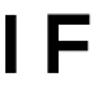Dora Duo: Tate Modern Stages Separate Surveys of Pioneering Artists Dora Maar and Dóra Maurer
- LONDON, United Kingdom
- /
- November 11, 2019
From November 20, 2019, to March 15, 2020, Tate Modern will host the most comprehensive exhibition of Dora Maar ever held. A concurrent show explores another avant-garde artist of note, Dóra Maurer.
During the 1930s, Dora Maar's provocative photomontages became celebrated icons of surrealism. Her eye for the unusual also translated to her commercial photography, including fashion and advertising, as well as to her social documentary projects. In Europe’s increasingly fraught political climate, Maar signed her name to numerous left-wing manifestos – a radical gesture for a woman at that time.
Her relationship with Pablo Picasso had a profound effect on both their careers. She documented the creation of his most political work, Guernica 1937. He painted her many times, including "Weeping Woman" 1937. Together they made a series of portraits combining experimental photographic and printmaking techniques.
In middle and later life Maar withdrew from photography. She concentrated on painting and found stimulation and solace in poetry, religion, and philosophy, returning to her darkroom only in her seventies.
This exhibition will explore the breadth of Maar's long career in the context of work by her contemporaries.
Also on view at Tate Modern, through July 5, 2020, is the pioneering and playful work of Dóra Maurer (b.1937, Budapest) in a year long, free exhibition. This is the first UK survey to celebrate Maurer’s five-decade career, bringing together 35 works from her conceptual photographic series and experimental films to her colourful graphic works and striking geometric paintings.
Dóra Maurer emerged as part of a generation of neo-avant-garde Hungarian artists in the 1960s, pursuing highly experimental work in parallel to the ‘official’ art system of the socialist regime. As an artist, teacher and curator she developed an international network across Europe and became a hugely influential figure for younger artists. The five room show at Tate Modern spans this diverse career, focusing on the themes of movement, displacement, perception and transformation that she continues to explore in her work today.
Trained as a graphic artist and printmaker in the 1950s, Maurer quickly began pushing the medium to its limits in her early works. The innovative Seven Foldings 1975, for example, involved folding an aluminium printing plate seven times before taking an impression. She then moved towards conceptual photographic series and experimental filmmaking, often exploring abstract sequences and the analysis of everyday gestures. Tate Modern showcases five of these films from the 1970s and 80s, including Triolets 1981 and Timing 1973/1980, which feature the repetition of activities, movements and rotations that have become characteristic of Maurer’s practice.
As her work became more geometric and abstract, Maurer explored system-based painting and the way in which geometric forms are affected by colour and perception. In 1983, a commission for a site-specific project at Schloss Buchberg, near Vienna, gave her the opportunity to expand her painting into three-dimensional space, marking an important shift in her work. Alongside documentation of this commission and several dynamic paintings from the 1980s and 90s, Tate Modern’s exhibition will culminate in a room of Maurer’s recent works, most of which have never been shown in the UK. These large-scale paintings are characterised by bold colour and geometric forms, including Stage II 2016, a six-metre-long work in which brightly coloured shapes create a sense of rhythmic three-dimensional movement through space.
Dóra Maurer is curated by Juliet Bingham, Curator International Art and Carly Whitefield, Assistant Curator Film, and is supported by the Dóra Maurer Exhibition Supporters Circle. It is accompanied by a fully illustrated catalogue from Tate Publishing. A film programme placing Maurer’s work in the context of the experimental Béla Balázs Studió in Budapest takes place in January 2020 alongside an in-conversation between Dóra Maurer and Frances Morris, Director, Tate Modern.


100x100_c.jpg)













